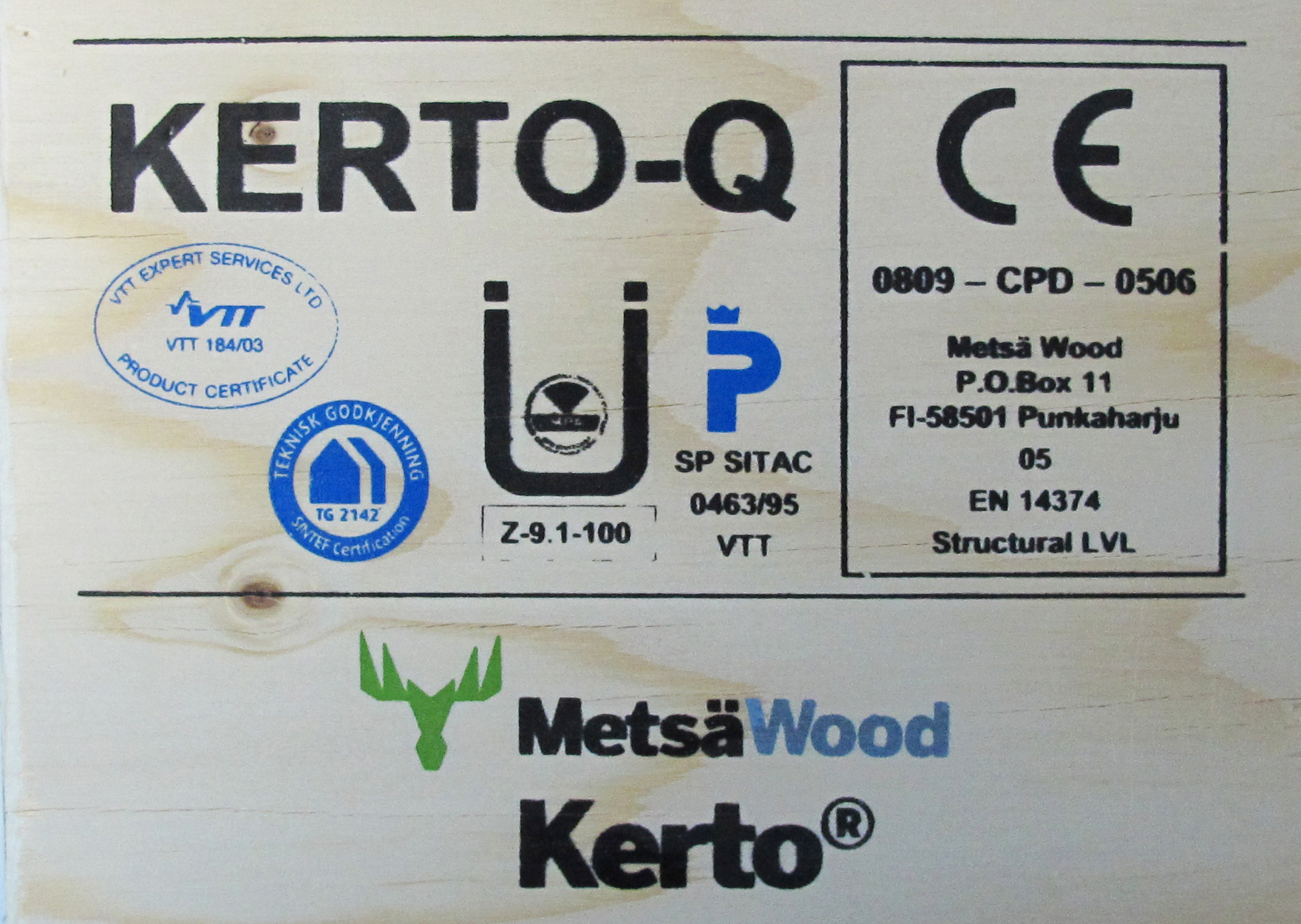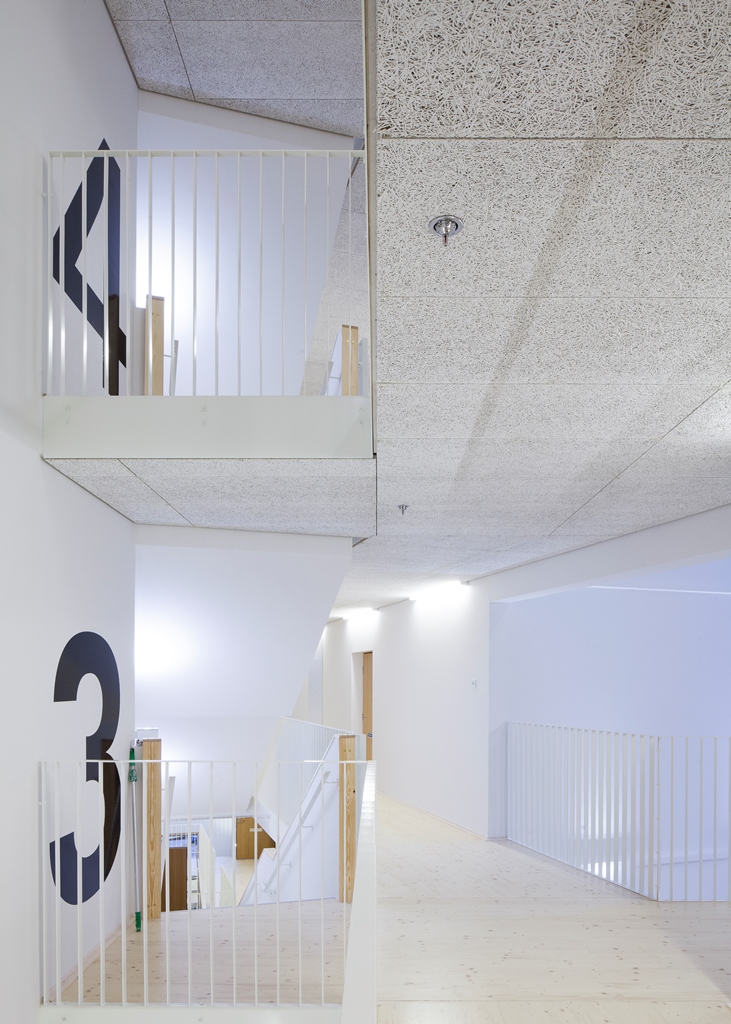
Woodworking industries are aiming at a leap in the quality of construction. This should be achieved with construction codes that are progressive in international comparisons and an exemplary quality of construction.
The sawmilling and plywood industries in Finland depend largely on exports. Of the products, 70 percent are used in construction.
Yet an increase in the market share in Finland, especially in urban construction, would also promote exports. If no wooden high-rise blocks of flats, bridges, office buildings, schools or day care centres are constructed in Finland itself, it will also be difficult to sell the know-how abroad.
The main obstacle to competitive exports are the codes enacted and interpreted by the authorities. ”Although the construction industry works under the rules of market economy, official codes should not distort the competition between different construction materials,” says Mr. Matti Mikkola, Managing Director of the Finnish Woodworking Industries Federation.
According to him, the codes create extra expenses for the use of wood in construction, which prevents the use of wood on a larger scale when constructing large buildings.
”In principle, the same codes are in force in the whole of Finland, but the cost of using wood in construction is increased by the fact that different authorities on the regional and municipal levels interpret the codes in different ways,” says Mikkola.
As to the European Union, even the codes vary. ”There are 27 member states in the EU, but there is much more variation than this would imply, because in some countries they also vary between regions,” says Mikkola.

Not in line with free competition
In principle, the situation is in complete conflict with the EU’s principles of free competition. Yet the politicians have not taken steps to correct the situation.
”This is understandable. The matter as such is felt to be important, but when you take a look at it as a whole, it may make you dizzy,” says Mikkola.
Mikkola believes that streamlining the codes will only work if some countries set a good example. He says that one such is provided by Switzerland, which has created material-neutral regulations for construction products.
At the moment, the competitiveness of concrete products on the European market is good. ”The concrete industry has systematically developed its products and solutions for 60 years, which is a good example for the woodworking industry,” says Mikkola.
The lightness of wood could be used to better advantage if the elements did not leave the factory before being fully finished. The weight of wood products is only one fifth of that of corresponding concrete ones, which also makes transporting them much easier.
Construction companies will realise the advantages of wood
According to Mikkola, construction companies active on international markets have concluded that the development of the concrete industry has reached the end of its line. ”It may develop further, but making a substantial leap in quality or changing the whole of its processes is very difficult,” says Mikkola.
This is why the construction companies are wondering whether the quality leap could be achieved by using wood. ”For them, the environmental aspects of building with wood are not the most important issue; rather, they are something you get into the bargain,” says Mikkola.
This creates a more solid base for the business. ”It is difficult to find anybody willing to pay for eco-friendliness. Now, however, the companies are looking at the processes of construction, to see whether they could be improved substantially,” says Mikkola.
In this as well, the advantages of wood are obvious. Wooden elements can be brought closer to completion in factories than concrete ones can, which makes for efficiency and uniform quality in construction. It also shortens considerably the time needed for on-site construction which is expensive and vulnerable to weather.
”All this means that wood offers a strategic opportunity for construction companies,” says Mikkola.

Target: urban areas, transport and infrastructure
The opportunities of building with wood are also considered by international real estate developers. ”For them, the most important thing is the plot, and especially its location. And they have found that the land is easier to get if they promise to construct ecologically and sustainably of wood,” says Mikkola. In addition to this, if the use of wood brings savings, they can be used to offset the purchasing price of the land.
On the other hand, even with a good location, construction may be difficult because of poor ground quality. Because of its lightness, wood may often be the ideal solution here as well
The goal is to increase the share of wood in high-rise urban construction and to win projects to construct modern public buildings and infrastructure, such as bridges. ”As regards Finnish construction codes, we use a sort of belt-and-braces approach, when in real life only one of the two would be needed. This creates obvious additional costs for building with wood,” says Mikkola.
”To take an example, the authorities may require both sprinklers and fireproof cladding, but for wooden buildings only. However, if a fire breaks out you have five minutes to get out in order to survive, and within that time it’s only the interior materials that will catch fire,” says Mikkola. The twofold fire safety requirements increase costs by as much as 4 to 8 percent.
The greatest challenge for building with wood is, however, market economy. ”If you have never used wood in construction, it constitutes a risk that will be priced in the tender. Thus, it is not enough that your costs are no higher than those of your traditional competitors, you must be able to clearly underbid them,” says Mikkola.
Press release of Finnish Woodworking Industries Federation
